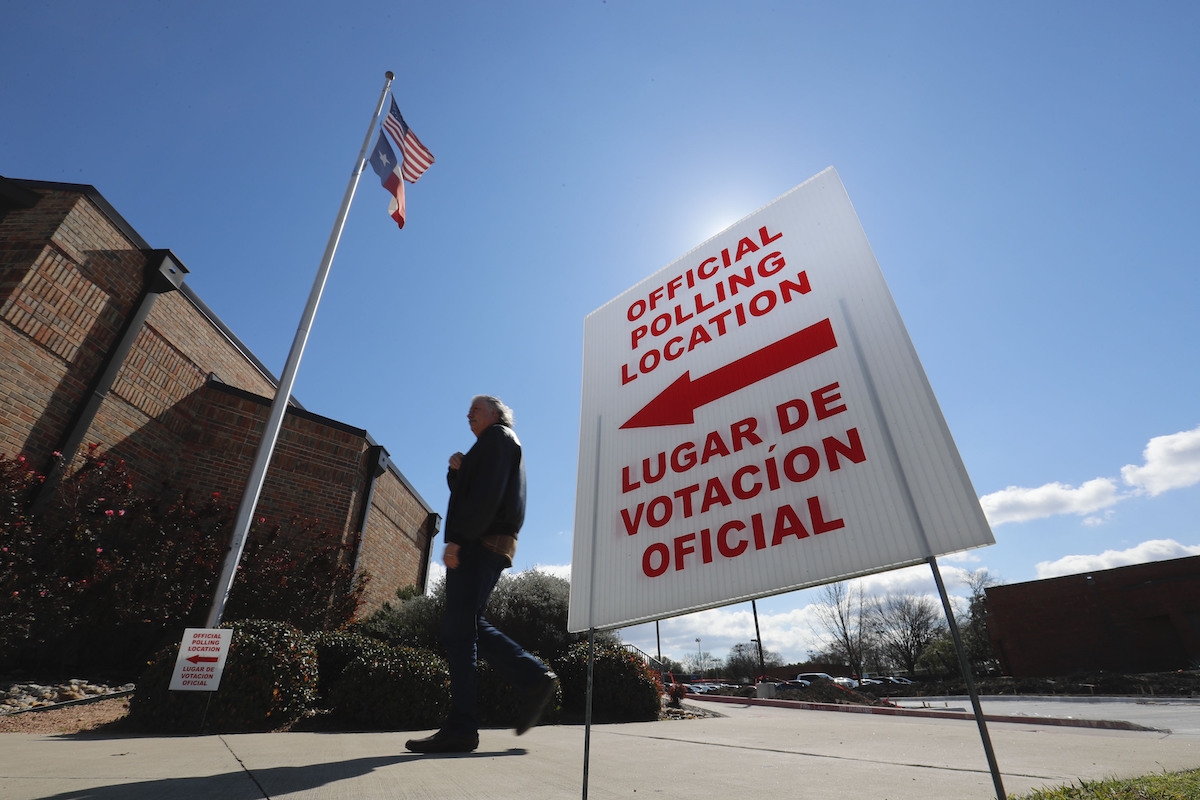

(AP Photo/LM Otero, File)
By Sonja Diaz and Héctor Sánchez Barba
Latinos remain the largest and youngest population in the United States, and will prove to be critical in this election year and far into the future as every 30 seconds a Latino ages into the electorate. With the November election right around the corner, both parties need to do more to not only expand support among Latino voters and drive people to the polls, but to assure them that they will be meaningfully included in policy and not forgotten for another four years once November 3 rolls around.
With a global pandemic still wreaking havoc, universal vote by mail is necessary to safeguard public health and ensure every eligible American is able to exercise their right to vote. Yet even with many states opening up this avenue to vote, there remain significant barriers to casting a ballot in light of COVID-19 and continued voter suppression, especially for Latino voters who represent the largest non-white eligible electorate.
This year, a record 32 million Latinos are projected to be eligible to vote in November, accounting for 13.3% of all eligible voters. And two-in-three Latino eligible voters live in just five states: California (with roughly a quarter of the nation’s Latino electorate), followed by Texas, Florida, New York and Arizona.
Yet in three of these five states, we see extreme limits being placed on vote by mail, as well as voter suppression tactics that disproportionately keep voters of color away from the ballot box. While these five all allow voters to cast mail-in ballots, significant barriers to access remain.
For example, Texas has some of the most restrictive vote by mail laws in the nation. To be eligible, you must be 65 years or older or disabled, among other requirements. Texas also has strict voter ID laws, which has resulted in primarily voters of color, being deprived of the right to cast a ballot. Arizona is currently being sued to overturn a provision which disenfranchises minority voters at higher rates than white voters. And in Florida, registered voters who were Black, Hispanic or Democrat experience higher rejection rates of their ballots.
This issue is not just one of restriction and suppression, however, it’s one of education and trust. Despite the restrictive laws in Texas, an August 2020 poll found that 57% of Latinos incorrectly believe that anyone in Texas can request and receive an absentee ballot. Further, even though universal vote by mail has been implemented in California, New York and many other states, Latino voters have limited knowledge of how vote-by-mail works, and only 60% have received adequate information on how to request vote-by-mail ballots. The same poll also found that 55% of Latinos do not trust that their ballots will be counted if they vote by mail.
Suppressive tactics, vote by mail restrictions and a lack of education on how to correctly vote by mail creates a perfect storm that puts the Latino electorate at a hefty disadvantage. And in this election year that will set the trajectory from state houses to the White House for the next decade, it is critical that voters be able to safely cast a ballot and trust that their vote will be counted.
Unfortunately, Democrats must do more to reach Latino voters. They must invest and address the systemic exclusion in access to voting that plague our communities. Republicans have shown even less interest in doing the work needed to not only engage these voters but to ensure they are able to safely vote in November in states like Texas and Florida that are actively making it harder to do so.
Over the past four years, both parties have placed a great deal of effort into persuading white voters in swing states rather than on expanding the electorate to get more Black, Latino and Asian Americans to vote. This is clearly seen in the fact that another August poll noted that 64% of Latino registered voters said they had not received any contact by either party. That poll also revealed that even for the Democratic party —whose base is voters of color— the levels of engagement were low, with only 24% of Latinos reporting contact by the Democratic party. And the numbers were even lower for the Republican party, with only 14% of respondents having received contact.
In the final weeks before the election, both parties have work to do if they want to secure the Latino vote in large numbers. And while the project is daunting, it is not impossible, and is critical to beginning to secure the growing Latino vote for the long-term.
Starting now, heavy investment must be made in educational campaigns around vote-by-mail to ensure voters, especially voters of color, are not disenfranchised by changes. Additionally, there must be engagement that tells Latinos exactly how policy is designed to benefit them and help them thrive in an economy recovering from the impact of global pandemic.
With only weeks to go, there is no time to lose. Both parties must focus on mobilization, particularly of Latino voters in California, Texas, Florida, New York, and Arizona, and those efforts must include voter protection against suppression and universal vote by mail. Furthermore, there must be an investment engagement that creates trust that the policy and representation needs of Latinos and other communities of color will be met after the election.
Latinos can no longer be an afterthought. Our vote must be earned, and candidates must use the last weeks of the election to just that.
***
Sonja Diaz is the founding director of the UCLA Latino Policy and Politics Initiative. Héctor Sánchez Barba is the Executive Director and CEO of Mi Familia Vota, a national civic engagement organization.


